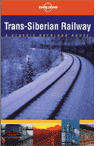Reviews:
Reporter World provides a variety of safety equipment, identification products, specialized high-visibility clothing, pertinent news, product reviews, book reviews and useful links specifically for reporters, writers, assignment editors, news correspondents, journalists, ENG crews, photographers, production staff, directors, segment producers, media security personnel, and freelancers: in short, anyone who is part of the news gathering, information reporting, or documentary film industries.
In this section we review various products and services of relevance to reporters, writers, correspondents, ENG teams and production staff. These products include cameras and accessories; computer hardware and software; scanners; printers; books and other products. Smaller, mini-reviews, are also available in other sections of this site including Products, Books and Movies.
We are constantly adding additional reviews to this section. If you have any suggestions for other products you would like us to review, simply e-mail us using the feedback address on our Terms of Service page. Please supply us with as much information as you can about the product (including name, manufacturer, model number) or book (including title, author, ISBN and publisher).
 Title: Lonely Planet Trans-Siberian Railway Title: Lonely Planet Trans-Siberian Railway
Authors: Simon Richmond and Mara Vorhees
Copyright: © 2002
Publisher: Lonely Planet Publications
ISBN: 1-86450-335-1
Relevance: Lonely Planet Trans-Siberian Railway is useful for any reporter or travel writer working in Russia, particularly in St. Petersburg or Moscow. Also useful for those traveling between Moscow and Beijing on the so-called Trans-Siberian railway.
Review: Lonely Planet Trans-Siberian Railway is a solid offering for adventurers traveling along the famed (but, technically, non-existent), Trans-Siberian Railway.
The book devotes its first major chapter to important facts for the Western visitor. This section includes site highlights, historical background, trip planning (including some important information about booking your train ticket), Russian tourist offices in many Western countries, visas and documents, embassies and consulates, customs and money. Lots of other need-to-know tidbits such as photography, electricity, health tips, as well as public holidays and special events are included in this section.
Reporters thinking about extended stays or contemplating a long posting to a Moscow-based news bureau will find the information contained within Lonely Planet Trans-Siberian Railway a bit too introductory. This is to be expected considering the book is primarily aimed at casual travelers in this country -- not those expecting to work or live in this region for an extended period of time.
Another standard section in just about every Lonely Planet book is titled Getting There and Away. In this case, this section features interesting and up-do-date information concerning air, land and sea travel, to and from major frontier cities within Russia, China and Mongolia. The small section detailing Russian-knowledgeable travel agencies and organized tours is very useful for people who want to do less trip planning and feel more comfortable in a package tour setting.
Portal cities
Since most people enter the Trans-Siberian Railway system through two "portal" cities, the book starts off with brief introductions on St. Petersburg and Moscow. Technically speaking, St. Petersburg is not on any railway line that is part of the Trans-Siberian Railway system. It is, however, often treated as a portal city since many travelers enter Russia though Helsinki, Finland (and thus, reach St. Petersburg as their first Russian city).
The book manages to pack in an impressive amount of information in the few pages it spends on each of these major cities. Reporters and correspondents traveling to St. Petersburg and/or Moscow and expecting to prolong their stays more than a few days should best consult stand-alone guide books such as Lonely Planet St. Petersburg and Lonely Planet Moscow, two excellent books we've used for exploring these cities.
Although some purists would decry the serious lack of detail contained in Trans-Siberian Railway relating to Moscow and St. Petersburg, we applaud the inclusion of enough information about these two cities for most people to begin their Trans-Siberian Railway journeys -- and still spend a few days in each exploring.
An interesting section titled Tracks Across Siberia: History of the Railroad spans an impressive 20 pages and provides much good information for railway buffs, history aficionados and generally, people who want to know more about the actual nuts and bolts about building a railway across some of the world's most inhospitable landscape.
A smaller section titled, Reading Between The Lines: Literature of the Trans-Siberian provides important information detailing the types of writing emanating from this section of the world -- as well as offering up some key writers who were exiled to frozen Siberia wastelands.
The remainder of Trans-Siberian Railway follows a "route" format and catalogues many cities on the Trans-Siberian Railway right of way. Accordingly, the book first travels between Moscow and Yekaterinburg and includes information on key cities such as Vladimir, Suzdal, Nizhny Novgorod, Vyatka, Perm and Kazan.
Next up is the segment between Yekaterinburg and Krasnoyarsk, including Yekaterinburg and its surroundings, Tyumen, Tobolsk, Omsk, Novosibirsk and of course, Tomsk. Although helpful, each of these city entries is very small (some are only a page or two in length) and underscores the spin of Trans-Siberian Railway: there is relatively little to see once you're out of Moscow and St. Petersburg.
True, it's difficult to translate a particular city's beauty and huge historical impact in a few words allowed for each small town, but many of these "small towns" are home to hundreds of thousands, if not millions of people. For instance, the town of Omsk has over 1.3 million people, the town of Novosibirsk has almost 2 million people, yet receive only a few pages each.
Still, both sections feature well designed maps (Lonely Planet's maps are legendary for their clarity). The maps, however, usually document only the major tourist area in the particular city, and include places to stay and places to eat as well as short sections on local transportation. Of course, guide books writers must always make often difficult trade-offs when deciding how much information to squeeze into each city's entry.
Traditional travelers will probably not notice this lack of detail as the writers do an excellent job of providing just enough information for their target audience. Writers, reporters and others interested in getting past the obvious tourist areas, on the other hand, will have to look elsewhere for any "off-the-beaten-path" information.
The world's largest lake
Krasnoyarsk to Irkutsk is up next and the book rightfully calls the reader's attention to Lake Baikal, a not-to-be-missed adventure when traveling on the Trans-Siberian Railway route.
Lake Baikal is the world's largest lake and home to one-fifth of the entire world's fresh water. The lake also hosts hundreds of species of plants, fish, mammals and other critters that are not found anywhere else in the world. Consequently, there is a thriving eco-tourism business in this area (although the phrase "eco-tourism" is not used in Russia).
Here, the book does a very good job of explaining how to explore this magnificent region of Russia and even provides a 12-page Nature Guide outlining some important native species. The Nature Guide is supplemented by some rather good pictures of species native to the area.
As we approach the Eastern terminus of the Trans-Siberian Railway route, a section titled Irkutsk to Vladivostok awaits. Following the same format as previous sections, this chapter covers major towns along the route, their attractions, and where to stay and eat in cities such as Ulan Ude, Chita, Birobidzhan, Khabarovsk, and of course, the huge naval port of Vladivostok.
Although the book is entitled Trans-Siberian Railway, the authors also include a section on the railway from Zaudinsky to Beijing -- usually referred to as the Trans-Mongolian route and Tarskaya to Beijing -- usually referred to as the Trans-Manchurian route. Although very short, each of these two "add on" sections do provide some valuable information on these two popular routes of railway travel.
The last chapter of the Trans-Siberian Railway features Beijing, the terminus of the Trans-Mongolian or Trans-Manchurian trips. Clearly, a book titled "Trans-Siberian Railway" is not going to spend a lot of time on Beijing, despite the Chinese capital providing a home to over 12 million people.
Here, in its 14 pages, we get a (very brief) history of the city and a map of central Beijing (the city is so large that there are complete books of maps of Beijing available). Thus, a map of central Beijing can only encompass a few blocks), showing, for example where Tiananmen Square can be found. A small section on the Great Wall is also included in this section.
Since most people who are interested in traveling on the Trans-Siberian Railway don't spend a lot of time exploring either Moscow or Beijing, but rather spend it on the train and between these two major cities, the short chapter about Beijing is completely understandable.
The book finishes up with a small appendix featuring important phrases in Russian, Chinese and Mongolian and a small glossary of important words and abbreviations for traveling within Russia, China and Mongolia. Those really wishing to understand more of the Russian language should consider Lonely Planet Russian Phrasebook, an excellent pocket-sized printed dictionary, or Teach Yourself Beginner's Russian, a book/audio CD collection.
Overall:
Lonely Planet Trans-Siberian Railway is recommended as an impressive introduction to train travel along one of the world's longest continuous railway routes. It features information vital to any traveler's enjoyment, safety and well-being when traveling in this region. Correspondents and reporters seeking a more in-depth experience will likely be drawn to several other books based on cities along the Trans-Siberian Railway route.
Correspondents and reporters working in Beijing will, of course, want to supplement their knowledge and understanding with one or more of the many guide books available for cities such as Lonely Planet Beijing, Lonely Planet Shanghai and, of course, Lonely Planet China.
Travelers looking to travel on the Siberian BAM railway (which Lonely Planet Trans-Siberian Railway does not cover), might be interested in Trailblazer's Siberian BAM Guide. Those traveling through China on rail might want to look at a very helpful book titled China By Rail.
End of Review
Have your say.
You can give us your feedback by visiting our Terms of Service page.
Buy this book.
If you wish to buy this book right now, please click here.
Read other reviews.
If you wish to return to the Reviews page, please click here.
|





